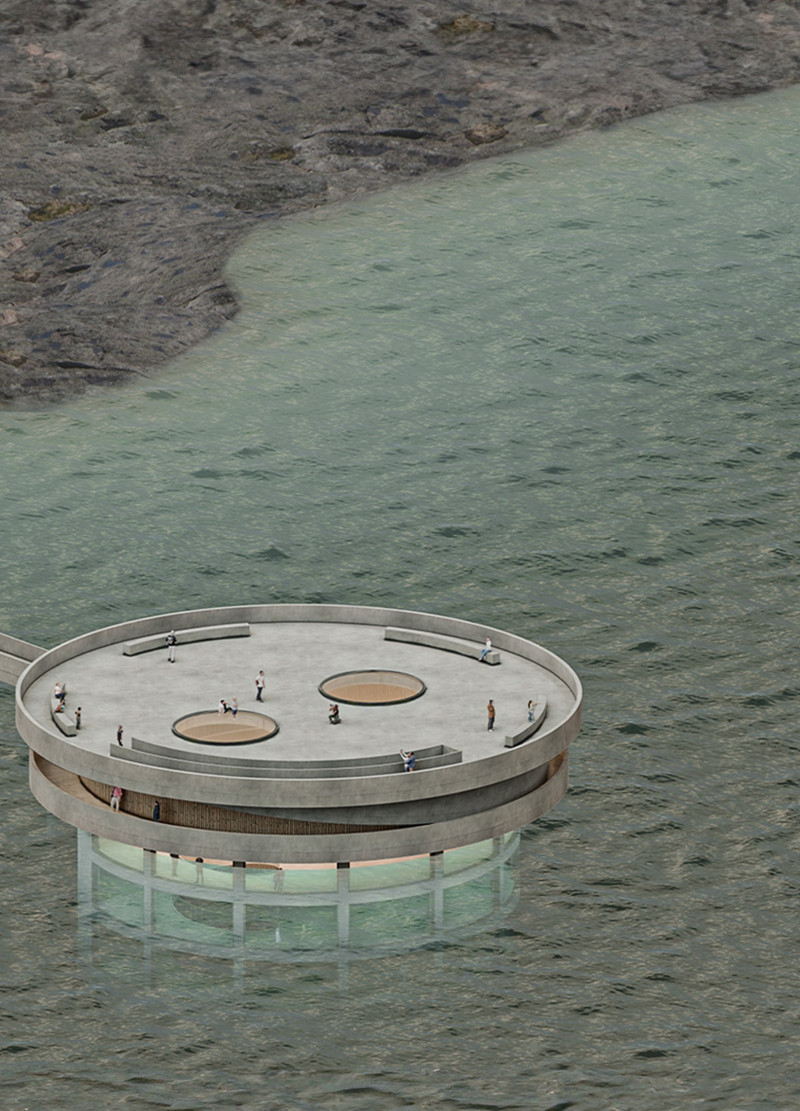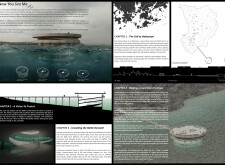5 key facts about this project
### Project Overview
"Now You Sea Me" is located on Hattusaari, an island in the Baltic Sea near Helsinki, Finland. Covering an area of 1,800 square meters, the structure functions as both an aquarium and an observatory, encouraging visitors to reflect on the relationship between humanity and marine ecosystems. This design addresses environmental challenges such as eutrophication and biodiversity loss, positioning architecture as a medium for enhancing awareness and understanding of ecological issues.
### Spatial Strategy and User Experience
The design includes a partially submerged observatory that creates an immersive experience for visitors. The circular form of the building resembles marine organisms and promotes a sense of connectivity. Access is facilitated through a series of ramps that guide individuals from the shoreline to underwater viewing areas, symbolizing a journey of introspection and discovery. Large transparent panels enable clear views into the aquatic environment, effectively bridging the interior and exterior landscapes.
### Materiality and Sustainability
Structural integrity is primarily achieved through reinforced concrete, selected for its durability in marine settings. Extensive use of glass for viewing areas enhances transparency and allows natural light to illuminate underwater spaces, improving the visitor experience. Sustainable timber is incorporated for non-structural elements, underscoring a commitment to ecological principles. Additionally, a specialized marine coating protects the submerged components from degradation caused by marine organisms. The overall material strategy emphasizes longevity while aligning with environmental stewardship.



















































